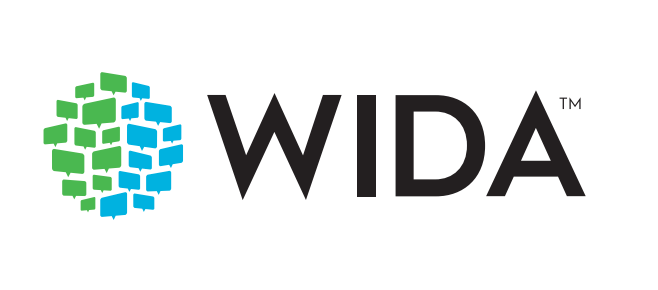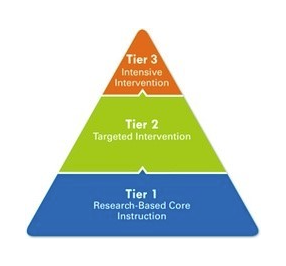- Norfolk Public Schools
- English Learners
Literacy Plan
Page Navigation
- Home
- Literacy Plan Action Steps
- Preschool
- Grades K-2
- Grades 3-5
- Grades 6 - 8
- Grades 9 - 12
- Literacy Across Content Areas
- Learning Support - Special Education Services
- English Learners
- Resources for Families
- Norfolk: A Community of Readers and Writers
- READ 14.2 Initiative
- Professional Development
- Virginia Literacy Act: Overview & Updates
- Virginia Literacy Act: Required Division Documents
- Glossary of Literacy Terms
-

While English Language Arts and English Language Development have similarities, it is important to remember that these two complementary programs have distinct goals. According to the Virginia Department of Education, “The goals of the English Standards of Learning are to teach students to read and to prepare students to participate in society as literate citizens, equipped with the ability to communicate effectively in their communities, in the workplace, and in postsecondary education.”The goal of English Language Development (ELD) instruction is to help students learn and acquire English to a level of proficiency that maximizes their capacity to engage successfully in all academic content areas. Unlike English Language Arts (ELA) which is a core content area for all students regardless of linguistic background, English Language Development (ELD) is only offered to students who have been identified as English Language Learners. ELD is specifically designed to advance English learners’ knowledge and use of the English by addressing both oracy (listening/speaking) and literacy (reading/writing) skills. English language acquisition is the primary objective of ELD while incorporating grade-level content objectives through the lens of language.
Curriculum
 WIDA English Language Development Standards
WIDA English Language Development StandardsWIDA English Language Development Standards
English Learners in Virginia are best served when they learn content and language together in linguistically and culturally sustaining ways. Norfolk Public Schools uses the WIDA English Language Development Standards Framework, 2020 edition as well as the Virginia Standards for Learning (SOLs) for its English learner curriculum.Instruction

Virginia EL Teacher Toolkit
VDOE Reading Instruction for English LearnersLanguage Instruction Education Program
English Learners in Norfolk Public Schools receive instruction through a variety of Language Instruction Education Program (LIEP) models. Most of our English Learners receive instruction through English Language Development (ELD) model. The goal of ELD is to develop full English proficiency to support grade appropriate academic success. At the elementary level, ELD instruction typically includes "pull out" time where English learners are grouped by proficiency level or "push in" time where a class may be co-taught by a general education and ESL teacher.
At the secondary level, ELD may also include an ESL course for credit. Some of our English learners also receive instruction through a Newcomer model. Newcomer groups or classes are for English learners who are newly arrived in the United States or have beginning levels of English proficiency (levels 1 & 2). All English Language Development and Newcomer instructional models are taught in English.Assessment

Virginia English Language Proficiency Assessments
ELP Screening
An English Language Proficiency (ELP) screening assessment is administered to a potential EL student during the enrollment process to determine the student's English proficiency and eligibility for English language instructional services.
ACCESS for ELLs 2.0
Once identified, English Learners in grades K-12 are assessed annually using the ACCESS for ELLs 2.0 assessment. ACCESS for ELLs 2.0 assesses social and instructional English used within the school context as well as academic English associated with language arts, mathematics, science and social studies. ACCESS for ELLs 2.0 is used to monitor students' progress in acquiring English proficiency.Intervention

MTSS Framework
NPS Literacy employs a Multi-Tiered Systems of Support (MTSS) framework for literacy. Response to Intervention or Responsiveness to Instruction (RtI) is one example of a multi-tiered system of support (MTSS) that helps educators identify the needs of all students. English Language Development (ELD) instruction is part of an English Learner's core Tier 1 instruction and cannot be viewed as an intervention. Any academic intervention services that are offered to general education students needing targeted or supplementary Tier 2 or Tier 3 supports are also available and provided for English learners.
Serving ELLs Who Need Additional Reading Support
Resources
The following websites are great resources to support English Learner literacy:
-
Eight Great Reading Tips for Families - https://www.colorincolorado.org/language-and-literacy-home-tips-multilingual
-
Fostering Literacy Development in English Language Learners: Fostering Literacy Development in English Language Learners | Colorín Colorado (colorincolorado.org)
-
Colorin Colorado: Colorín Colorado | A bilingual site for educators and families of English language learners (colorincolorado.org)
-
VDOE English Learner Education Page: https://www.doe.virginia.gov/teaching-learning-assessment/specialized-instruction/english-learner-education
-
English Learner Family Toolkit: https://ncela.ed.gov/educator-support/toolkits/family-toolkit
-
Newcomer Toolkit: https://ncela.ed.gov/sites/default/files/2023-06/NewcomerToolkit-06222023-508_OELA.pdf
-

